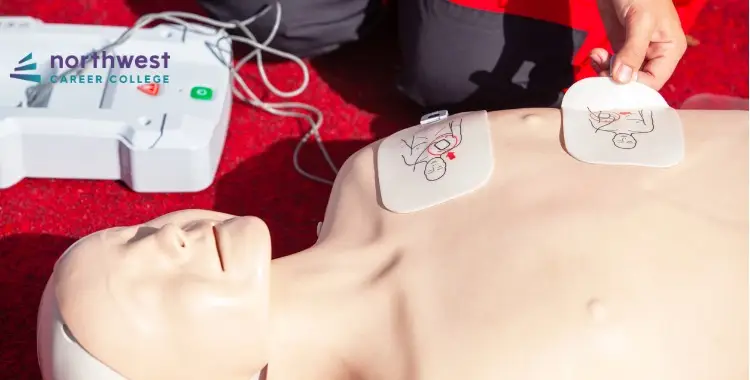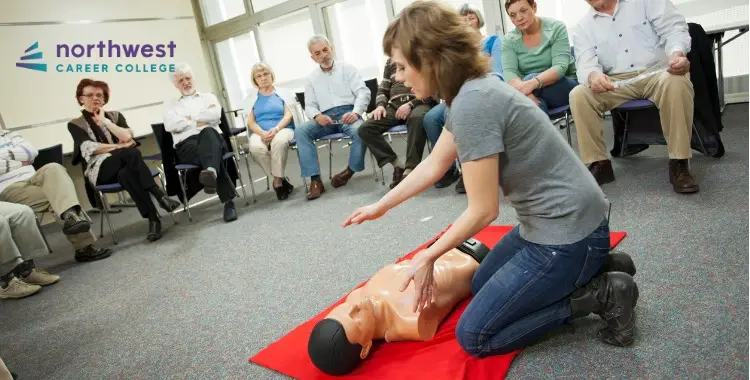What is the Recommended Chest Compression for Senior Citizens?
- CPR
- August 7, 2024
- 2.1k views
- 4 min read

One of the essential techniques that could save lives from cardiac arrest is cardiopulmonary resuscitation. Proper CPR resuscitation at that moment helps increase a patient’s chances of survival and recovery. The approach to CPR, however, certainly changes with age and physical condition.
To safely and effectively perform chest compression with senior citizens, it will be essential to understand the recommended techniques for this age group.
Table of Contents
Understanding CPR and Chest Compressions
CPR involves chest compressions with intermittent rescue breaths to maintain circulatory flow and oxygenation in cardiac arrest. Chest compressions are critical since they manually pump blood through the heart to the rest of the body, particularly to the brain and vital organs.
Why the Chest Compression Technique Matters for Seniors?
Elders are generally more fragile than younger individuals. Issues such as osteoporosis, general fragility, or other age-related conditions may dictate how chest compressions are applied. Proper CPR techniques can maintain safety while still rendering aid.
Recommended Chest Compression Techniques in the Elderly.
Correct Placement of Hands
Chest compressions are incredibly dependent on correct hand placement. In older adults, tremendous pressure must be delivered correctly to prevent rib fractures or other injuries.
Key Components:
- The heel of Hand: The heel of one hand is placed in the center of the chest on the lower half of the sternum.
- Interlock Fingers: Place your other hand on top of the first and interlock the fingers to spread the weight more evenly.
- Straight Arms: Keep your arms straight, keeping your shoulders directly over your hands at all times during the action to use body weight for compressions rather than using only arm strength.
Compression Depth and Rate
Depth and rate of chest compressions are two significant parameters of CPR that affect blood circulation. In the elderly, these parameters need particular attention to balance efficacy and safety.
Key Components
- Compression Depth: The compression depth ought to be at least 2 inches but shall not exceed 2.4 inches. This depth appears reasonable enough to elicit adequate blood flow without a disproportionate injury risk.
- Compression Rate: Compressions should be given at 100-120 per minute.
- Allow Full Recoil: The chest must return to its normal position fully after every compression. This is required so that the heart fills with blood between compressions, which is essential for effective CPR.
Limit Interruptions
Continuous compressions are essential in maintaining blood flow during CPR. Less interruption means that the oxygenated blood continues to be circulated.
Key Components
- Avoid Pauses: Minimize interruptions to chest compressions. Stop only when necessary when giving rescue breaths or when an AED is used.
- Coordinate Breaths: If conducting rescue breaths, give two breaths after every 30 compressions. Each breath is to be administered over one second to raise the chest visibly.
How to Use an AED
An automated external defibrillator could significantly increase survivability in cardiac arrest. Use the AED when it is available and follow the voice prompts.
Early Use: The AED should be applied as soon as possible. Follow the device’s instructions regarding setting up pads and delivering shocks. Continue CPR until the AED prompts you to stop or emergency medical personnel take over.
Training and Practice
Any person who might be called upon to perform CPR, especially elderly citizens, must be trained and practiced regularly.
- Certification Courses: Attend a CPR course with a certified American Heart Association or the Red Cross instructor.
- Refreshers Regularly: Refresh yourself occasionally by taking refresher courses regarding the latest guidelines and techniques.
Conclusion
Attention should be paid to the depth, rate, and technique of chest compressions in CPR performance in elderly patients. By following recommended guidelines regarding hand placement, depth of compression, and the fewest possible interruptions, certified CPR can offer lifesaving help during emergencies.
Get your official CPR certification at Northwest Career College. NCC is a trade school that takes pride in providing quality education and training for future professionals.




